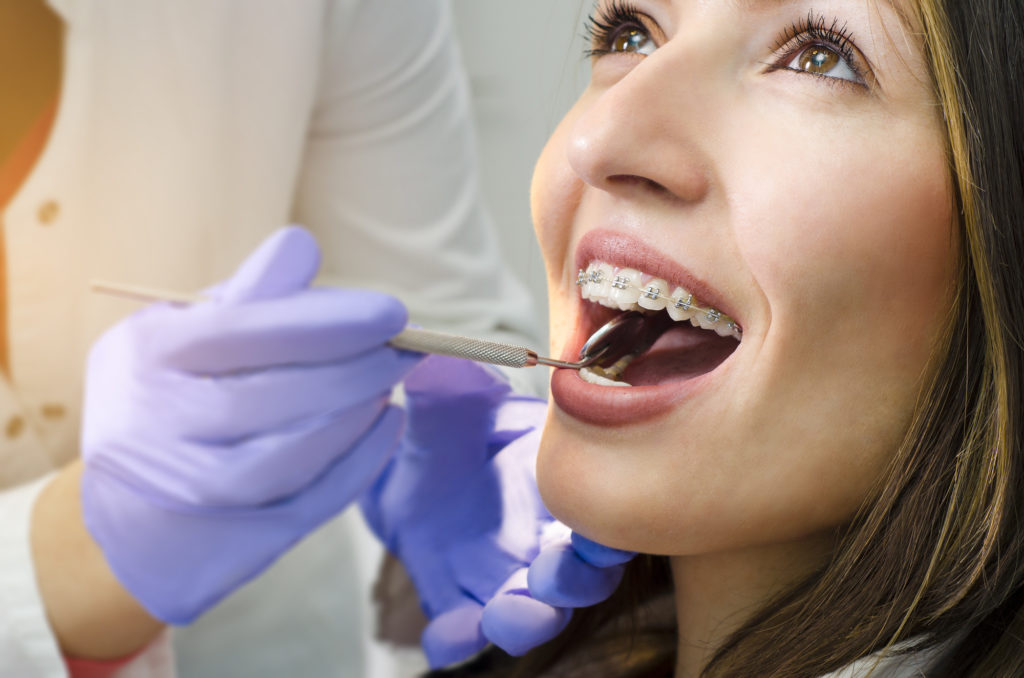With over four million people in the United States wearing braces, chances are you have undergone the orthodontic work yourself. These days, it is almost more common to encounter someone who has or has had braces than those who never did.
If you are in the position to get braces, there are a few things you will want to know before the dental work. The journey to straight teeth is a long one, but well worth it.
In this article, we will review some types of braces, some of the most common ages to get them, and what you need to do to prepare.
Read on for more information.
What Are Braces?
There are a variety of different teeth-straightening methods that can all fall under the same category of braces. In general, dental braces are any device that straightens the teeth gradually.
As the teeth straighten, there are a host of benefits to be had.
Straight teeth, for one, are visually appealing. They can improve a smile’s appearance and also make an individual feel more confident.
Straightened teeth can also help with crowding. If your teeth begin to crowd together they can grow crookedly. This can lead to pain in the jaw, when you eat, or other complications.
As braces begin to work, the bone of the jaw slowly begins to shift as teeth require different spaces. This slow change helps to spread biting pressure across the entire mouth. This can be a great alleviation of mouth pain.
As mentioned, there are several different types of braces. We will explore these next.
Different Types
Metal ones are certainly the most common type. These adhere to the teeth with dental cement. Each brace is made up of a small metal square connected by a wire.
Over time, a dentist will adjust the braces to ensure that teeth are moving in the correct direction. Most individuals wear metal ones for at least a year, sometimes two or three years.
Metal ones often include a plan to align the bite of your teeth. This includes the use of elastics within the braces. The bands “force” the jaw to begin biting in the correct way, as it is much more difficult to chew in a way you are accustomed to with the elastics interfering.
The metal option may be the most common, but they are certainly not the most comfortable.
This is where plastic trays come into play. Orthodontic work like Invisalign offers a slightly more comfortable way to obtain the benefits of straight teeth without the self-conscious appearance of metal braces.
Invisalign works the same way as traditional metal, except instead of cement and metal, individuals wear a plastic tray. This tray is custom-molded to an individual’s mouth and gradually changes in fit over time. This forces a gentle pressure on the teeth and jawbones, allowing for changes in teeth alignment.
Most individuals seek a product like Invisalign because of its appearance. It is a completely clear tray inserted into the mouth and is not immediately obvious. The tray must be worn for up to 22 hours a day to fully take effect.
While you can remove your Invisalign tray, it is not recommended as it will affect your treatment.
Age and Orthodontic Work
There is a reason you will mostly see children and teenagers with braces.
During childhood, it is much easier to straighten teeth and create lasting results. While children do undergo treatment with braces, kid braces are a bit intense for young children.
That is why the focus is usually on teens. A teenager can withstand the sometimes painful elements, but they are still at a prime age to begin adjusting their teeth.
Adults actually make up a significant portion of those with braces in the United States. For those who grew up without significant orthodontic care, or had braces but now have crooked teeth, adult braces are a choice to correct dental mistakes.
Invisalign and other aligner trays are a common choice for adults who do not have the time for multiple dental visits, or are self-conscious about the appearance of metal braces.
How to Prepare
The benefits do not come without some less-than-desirable aspects.
They can be painful in more ways than one. Metal braces can get caught on the inside of your mouth, causing bleeding and soreness. If you play sports, getting hit in the face can take on a new, painful meeting if braces are caught on the inside of your mouth.
Since metal braces must be tightened periodically, they can cause significant soreness to your teeth and jaws, something that can last for several days.
Eating is also significantly impacted. Foods can get stuck within the metal braces, which can limit your food options. And watch out for staining; certain drinks can leave stains in the shape of your braces.
But the pain and limitations are worth the long-run results. Straight teeth and a better bite can significantly improve the comfort and health of your teeth. This makes it much easier to maintain a good dental health routine.
Braces for Straight Teeth
Now that you have the low down, consider yourself prepared.
They are a life-changing implement that can seriously impact your oral health in a positive way. The easiest way to mentally prepare yourself for braces is to just relax. If you have questions, be sure to ask your orthodontist.
These experts know the ins and outs of braces and can answer any pressing questions or worries that you have.
If you have questions about your upcoming orthodontist appointment, do not hesitate to reach out to us. Our expert dental office can answer all of your questions. With our years of experience, we are also a great resource for learning more about braces or even having a procedure done.
Contact us today for more information. We look forward to hearing from you!

